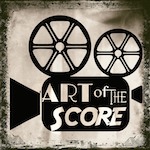Episode 16: The Force Awakens - Part 2
/In Episode 16, we finish our look at Williams’ seventh entry into the Star Wars universe by looking at what’s returned and what hasn’t. We take apart the reoccurring Star Wars themes and how they’re used in The Force Awakens, and make a number of bold and possibly a little reckless predictions for The Last Jedi (then unreleased).
Episode notes:
3:01 – Yes, this was recorded before The Last Jedi was released, and we’re sorry
4:04 – What were our reactions to The Force Awakens’ music when it was released?
9:50 – Ice Landing and the Rebel Fanfare
12:48 – Han Solo and the Princess in The Force Awakens
20:06 – Scherzo for X-Wings and the undanceable dance
26:02 – The Force Theme Awakens
30:00 – The Homestead Burns Again
36:20 – The sonic signature of The Force Awakens
37:30 – Williams’ emotional mood shifts and the journey to Luke Skywalker
39:54 – The brief return of Darth Vader
41:35 – Nick promises to walk out of The Last Jedi in disgust (Narrator: he did not)
48:54 – Andrew embarrasses himself with some music-inspired Last Jedi predictions
52:15 – The Skywalker map and the tritone
56:12 – Snoke’s supreme choir – and Andrew embarrasses himself again
1:04:29 – The death scenes of The Force Awakens and John Williams’ string lament’s across episodes
1:19:50 – Finn’s Phantom Confession
1:21:09 – Maz Kanata’s Jabba Flow
1:24:03 – Dan hopes for some more zany Williams jazz (Narrator: he got it)
We love to hear from our listeners – get in touch via Twitter, Instagram, and Facebook, and if you like Art of the Score, please take a moment to subscribe, rate and comment.

































